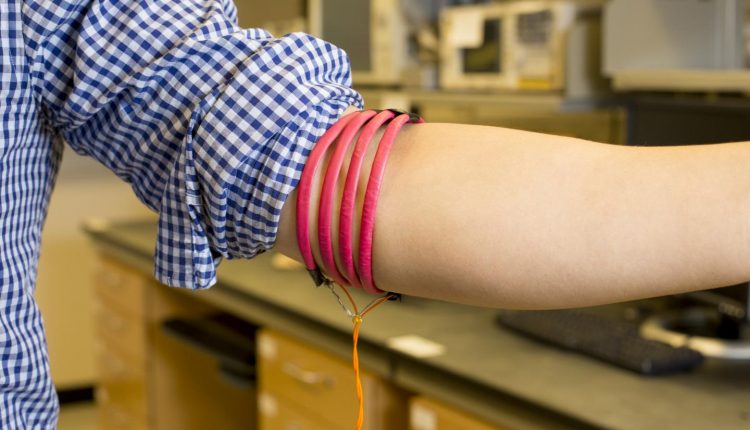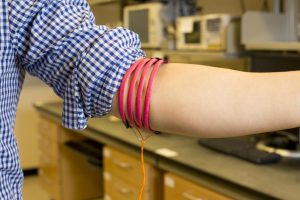
Engineers Discover A New Way To Communicate By Sending Electrical Signals Through The Body
Engineers from the University of California, San Diego have made a discovery that may allow all of your wearable devices to communicate with one another, right through your body.
The team’s new wireless communication technique works by sending magnetic signals through the human body and could offer a lower power and more secure way to communicate information between wearable electronic devices. In this form of wireless communication, magnetic fields are passed freely through biological tissues, so signals are communicated with much lower path losses and potentially, much lower power consumption.

The researchers are still working on the system, but the’d like to create an ultra low power wireless system that can send information all around the human body. One such use for this technology would be a wireless sensor network for full-body health monitoring.
“In the future, people are going to be wearing more electronics, such as smart watches, fitness trackers and health monitors. All of these devices will need to communicate information with each other. Currently, these devices transmit information using Bluetooth radios, which use a lot of power to communicate. We’re trying to find new ways to communicate information around the human body that use much less power,” said Patrick Mercier, a professor in the Department of Electrical and Computer Engineering at UC San Diego who led the study.
The new system presents a better alternative to current wireless communication systems such as Bluetooth. Bluetooth technology uses electromagnetic radiation to transmit data, however these radio signals do not easily pass through the human body and therefore require a power boost to help overcome this signal obstruction, or “path loss.”
To test out the technique, the team built a prototype that consisted of copper wires insulated with PVC tubes. On one end, the copper wires were hooked up to an external analyzer and on the other end, the wires were wrapped in coils around three areas of the body: the head, arms and legs. The coils in the prototype act as the sources for magnetic fields and are capable of sending magnetic signals from one part of the body to another using the body as a guide. Once the prototype was developed, the researchers were able to test and measure low path loss communication from arm to arm, from arm to head, and from arm to leg.
For more information visit the University of California, San Diego website.
